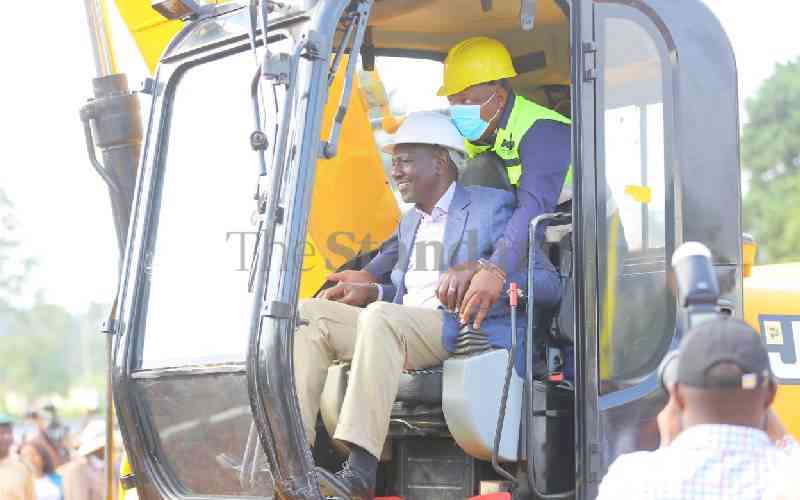
Regional trading blocs, the world over, remain the engine blocks for development and regional relations.
You rarely find neighbouring countries under the same trading bloc engaging in fights and even if they do, such disagreements are quickly doused because there are mechanisms for dealing with such.
Traditionally, we have seen trading blocs encourage countries to take advantage of the common market to move their goods to neighbouring markets. And these markets, once consolidated under a regional bloc, can be massive.
In the case of East African Community, we are looking at over 300 million people and growing. This is a market that would make any investor drool.
Among the blocs however, not much has been done in promoting investments despite huge market potential. We have been operating under misplaced notion that foreign direct investments can only come from the global North. However, this is changing. Today, Kenya and Tanzania for instance have cross-capital investments in various sectors of the two countries’ economies that are world class by any standards.
In the last two years, we have seen a huge influx of capital from Tanzania into Kenya. Two years ago, Taifa Gas, a Tanzania-based conglomerate opened a multi-million-dollar facility at the coast for packaging gas for the mass market. The project promoters said you couldn’t claim to be a regional player without a foothold in the Kenyan market.
Today, we are seeing another Tanzanian conglomerate – Amsons Group – taking a huge bet in the Kenyan economy by placing a US$180 million in acquiring 100 per cent of Kenya’s Bamburi Cement. For some reason, Kenya’s cement production and consumption has been on the decline.
Yet, the regional market has been growing at a good pace meaning there are opportunities for savvy entrepreneurs. This is the kind of foreign direct investments we need.
It is a milestone that should be celebrated instead of us being caught up in revisionist patriotism that somehow tends to celebrate investments from the west but look down on investments from our neighbours.
Investors look at many factors on where to put their money. Political stability, economic growth, demand for the product and purchasing power are some of the factors. Despite the street protests that rocked Kenya the other day, all in all, we are considered politically stable.
If we look at the two largest economies within the EAC, they are experiencing stable growth rates. Kenya’s and Tanzania’s GDP for instance is projected to grow at 5.3 and 6.1 per cent respectively.
At the same time, Tanzania has remained a key source of Kenya’s imports – second to South Africa – as traders take advantage of low tariffs and buoyant market. On the other hand, exports to Tanzania from Kenya have been on the increase.
The thing is statesmanship plays a leading role in these bilateral relations that lead to these investments. In the two instances I have referred to, good relations between the two governments are key to hastening the usually tedious and sometimes frustrating cross-border investments.
The decision to resolve non-tariff barriers between Kenya and Tanzania for instance was quickly resolved following a meeting between President William Ruto and Tanzanian’s Samia Suluhu last year. The issue had been a thorn in the flesh.
Stay informed. Subscribe to our newsletter
Remember when Kenya’s tourist vehicles were blocked from accessing Tanzania’s tourism circuit? We retaliated by killing a few thousand chicks destined for the Kenyan market ostensibly because it was feared they would introduce some diseases to our poultry. Such can be the pettiness of cross border trade and bureaucrats calling the shots!
Kenya has in the past focused to the West and East for sizeable FDI inflows and tended to overlook neighbouring countries. It is now clear that FDI receipts can also be sourced from our neightbours. Our Kenyan conglomerates should also emulate our neighbours in exploring opportunities across the borders.
The writer is a communications consultant and journalist
 The Standard Group Plc is a
multi-media organization with investments in media platforms spanning newspaper
print operations, television, radio broadcasting, digital and online services. The
Standard Group is recognized as a leading multi-media house in Kenya with a key
influence in matters of national and international interest.
The Standard Group Plc is a
multi-media organization with investments in media platforms spanning newspaper
print operations, television, radio broadcasting, digital and online services. The
Standard Group is recognized as a leading multi-media house in Kenya with a key
influence in matters of national and international interest.
 The Standard Group Plc is a
multi-media organization with investments in media platforms spanning newspaper
print operations, television, radio broadcasting, digital and online services. The
Standard Group is recognized as a leading multi-media house in Kenya with a key
influence in matters of national and international interest.
The Standard Group Plc is a
multi-media organization with investments in media platforms spanning newspaper
print operations, television, radio broadcasting, digital and online services. The
Standard Group is recognized as a leading multi-media house in Kenya with a key
influence in matters of national and international interest.









